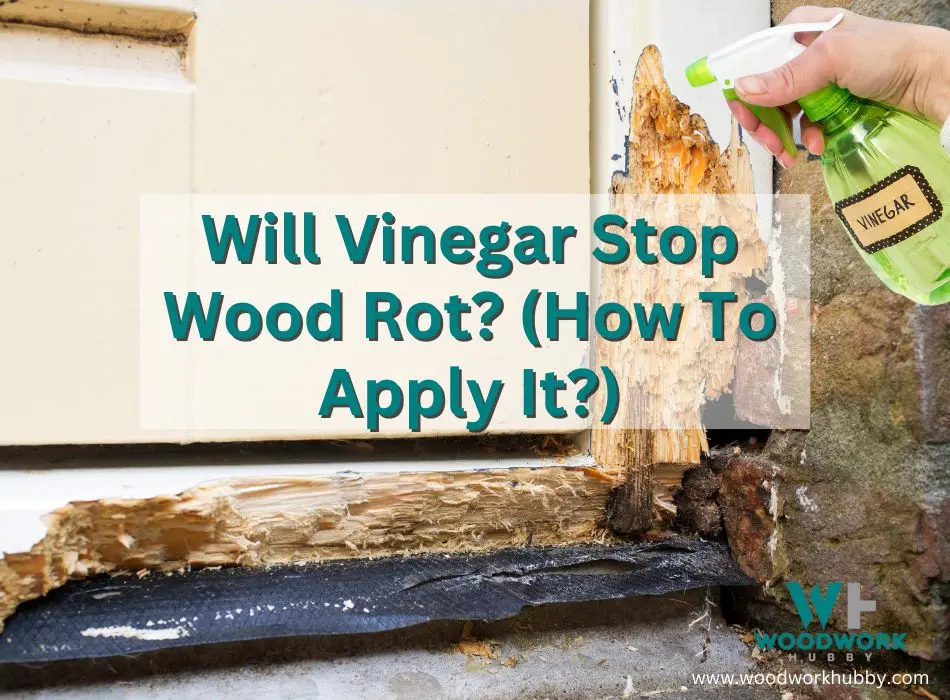Dealing with wood rot can be a real nuisance, right? I’ve been there, battling against creeping decay and hefty repair costs. After digging deep into the world of fungus-fighting solutions, I discovered the surprising power of ordinary household vinegar to halt wood rot in its tracks! This article will guide you step-by-step on how to harness this simple remedy effectively.
Key Takeaways
- Vinegar can be used as a natural and effective solution to stop wood rot by eliminating fungal growth.
- To apply vinegar, you can either spray it directly onto the affected area or soak a cloth in vinegar and apply it to the wood.
- It is important to first remove moisture from the affected area before applying treatments like boric acid, epoxy bonding agent, and borate preservatives.
- Regular maintenance practices such as keeping wood dry and applying protective coatings can help prevent future wood rot.
Using Vinegar to Stop Wood Rot
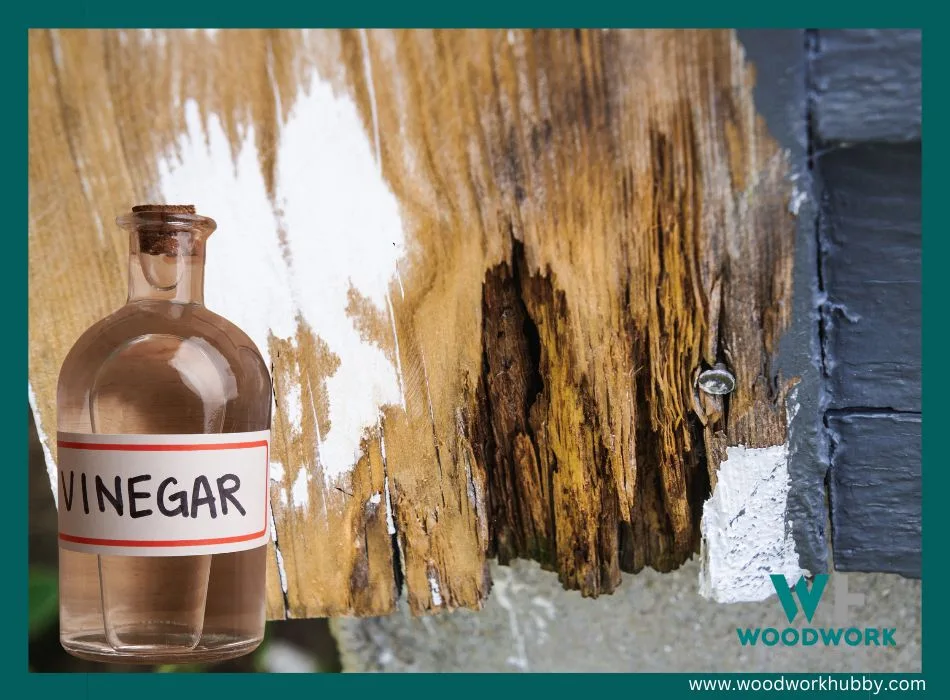
To effectively stop wood rot, there are several steps you can take using vinegar as a natural and effective solution to combat fungal infections.
Sprinkle boric acid on wood with signs of dry rot
In the battle against wood rot, boric acid shines as a potent fungicide. Ideal for dry rot treatment, this mild yet effective compound penetrates deep into the wood to combat fungal infection.
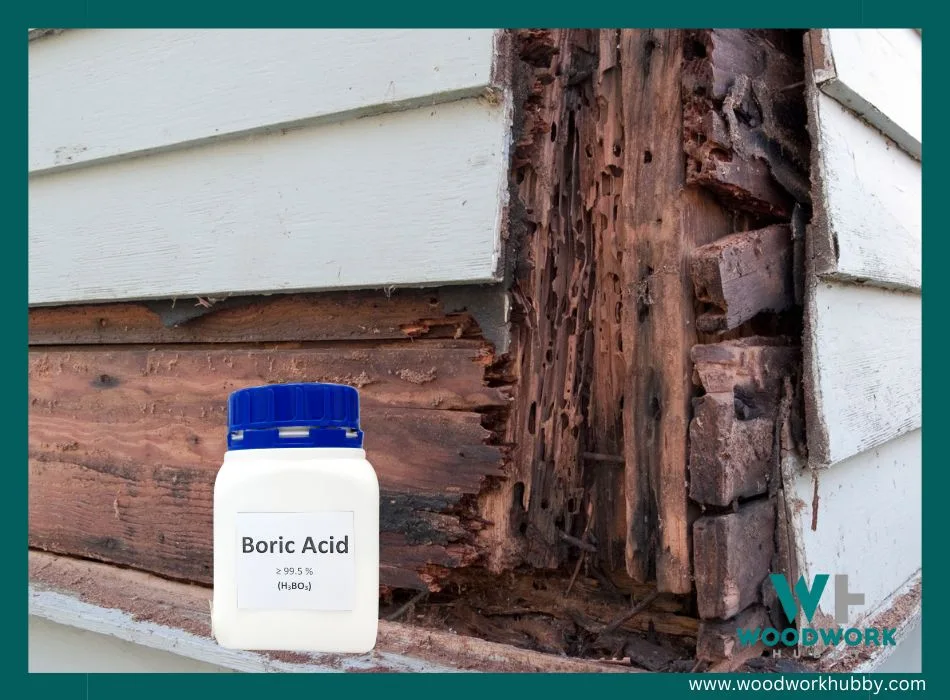
You start by lightly sprinkling boric acid onto areas showing notable signs of decay or damage. The acid works its antifungal magic by rebalancing the pH level within the wood, creating an environment where fungi simply can’t survive.
It’s worth noting that before applying any form of treatment, it is essential to first eliminate all moisture from the affected area – fungi thrive in damp settings after all! So once the area is dry and dusted with boric acid, you not only contain current infections but also prevent further fungal growth down the line.
Fill in the wood with an epoxy bonding agent
To repair wood affected by dry rot, filling in the damaged areas with an epoxy bonding agent is a crucial step. Epoxy acts as a strong adhesive and helps restore the structural integrity of the wood.
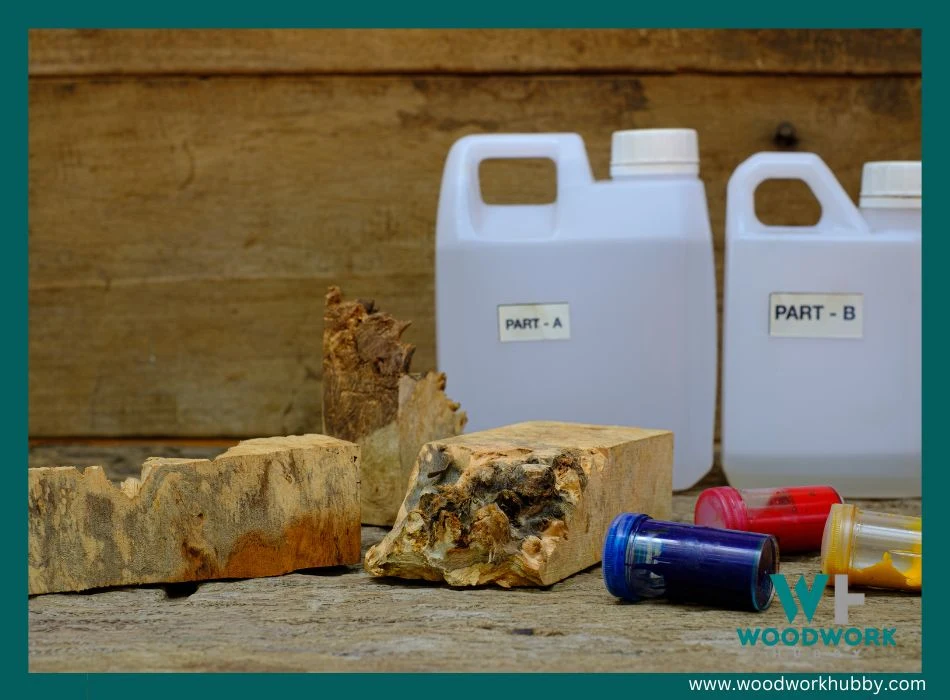
Before applying the epoxy, make sure to remove any loose or crumbling wood from the affected area using a chisel or scraper. Once you have cleaned out the rotted wood, mix the epoxy according to the manufacturer’s instructions.
Apply a thin layer of epoxy to all surfaces that will come into contact with new wood or other materials. This ensures that there are no gaps between old and new parts of the structure, preventing further moisture penetration and potential rotting.
Press firmly on each side of the joint, ensuring that it bonds securely together. Allow the epoxy to cure fully before moving on to other steps.
By filling in rotted areas with an epoxy bonding agent, you’re effectively reinforcing weakened areas and creating a solid foundation for future protection against wood rot. This method can help extend the lifespan of your wooden structures and prevent further decay.
Apply a borate preservative to permanently prevent dry rot
To permanently prevent dry rot, applying a borate preservative is crucial. Borate preservatives contain boron compounds that act as a powerful defense against wood decay and fungal growth.
These preservatives penetrate deep into the wood fibers and create an environment inhospitable to rot-causing organisms. They not only eradicate existing infections but also provide long-lasting protection against future damage.
By neutralizing the acidic conditions that promote rot, borate treatments effectively halt the progression of dry rot and preserve the structural integrity of the wood. Regular application of a borate preservative can ensure that your wood remains strong and resistant to decay for years to come.
Applying Vinegar to Wood
To apply vinegar to wood, you can either spray it directly onto the affected area or soak a cloth in vinegar and apply it to the wood.
Spraying vinegar onto the affected area
To effectively apply vinegar to stop wood rot, one method is to spray it directly onto the affected area. Vinegar acts as a natural fungicide with antimicrobial properties, making it an ideal solution for combatting wood decay caused by fungal growth.
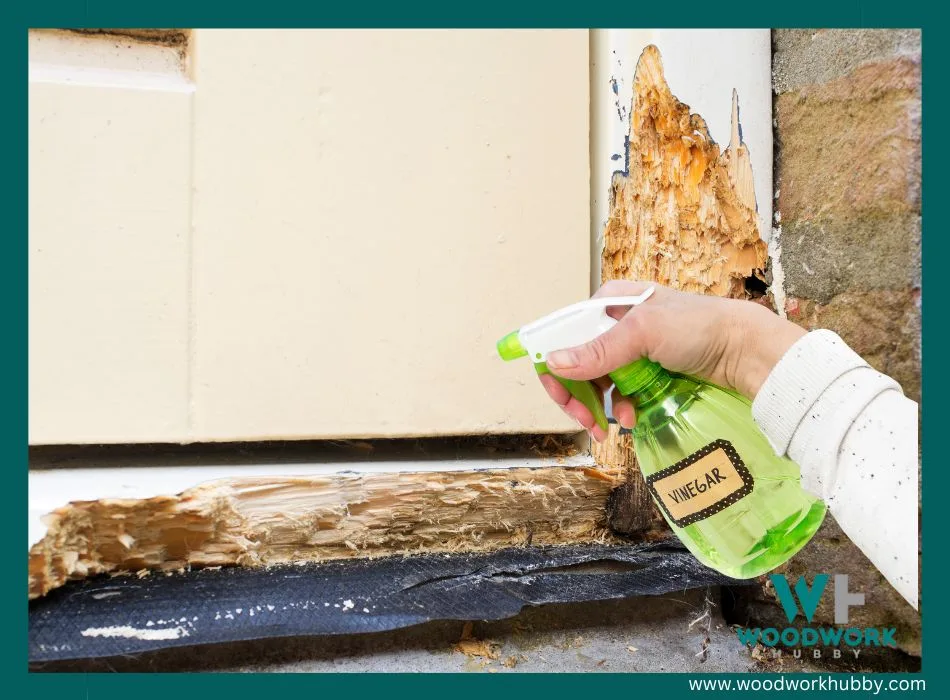
By spraying vinegar onto the wood, you can help eliminate the infection and kill any existing spores that may be present. This simple and straightforward approach can be an effective way to prevent further damage and preserve your wood surfaces.
Soaking a cloth in vinegar and applying it to the wood
One effective way to use vinegar to stop wood rot is by soaking a cloth in vinegar and applying it directly to the affected area. Start by pouring some white vinegar into a bowl or container and submerging a clean cloth into it.
Make sure the cloth is fully saturated with vinegar before wringing out any excess liquid.
Next, place the soaked cloth onto the wood that shows signs of rot. Gently press down on the cloth to ensure good contact between the vinegar and the wood surface. Allow the vinegar-soaked cloth to remain in place for several hours or overnight, giving it time to penetrate deep into the wood fibers.
Vinegar’s antimicrobial properties will work their magic, killing off any fungi causing wood decay while also restoring pH levels to prevent further infection. Once you’ve treated all areas of concern, allow the wood and cloth combination to dry naturally.
By using this method, you’re utilizing vinegar’s natural antifungal properties as an effective DIY solution for combating wood rot. Keep in mind that if your rot issue is severe or extensive, seeking professional assistance may be necessary for proper identification and treatment of dry rot or wet rot.
Allowing the vinegar to penetrate the wood and dry naturally
I find that allowing the vinegar to penetrate the wood and naturally dry is a crucial step in effectively treating wood rot. Once you have sprayed or applied vinegar onto the affected area, give it some time for the vinegar to soak into the wood.
This will allow its antimicrobial properties to work their magic against the fungal infection causing the rot. Remember, vinegar acts as a natural fungicide and helps restore the pH level of the wood, eliminating the infection and killing spores.
By letting it dry naturally, you ensure that all areas of concern are properly treated. So remember to be patient and let nature take its course!
Conclusion – Will Vinegar Stop Wood Rot?
In conclusion, vinegar can be a useful and natural solution for stopping wood rot. By applying vinegar to affected areas, you can help eliminate fungal growth and prevent further damage.
Whether it’s spraying vinegar or using a cloth soaked in it, allowing the wood to dry naturally after application is important. Remember to take preventative measures to keep wood dry and protected in order to avoid future wood rot issues.
With its antimicrobial properties, vinegar can be an effective DIY solution for combating wood rot. So don’t hesitate to give it a try!
FAQs
1. Can vinegar stop wood rot?
Vinegar can help to slow down the progression of wood rot and inhibit the growth of fungus, but it may not completely stop it. It is best used as a preventive measure or in early stages of decay.
2. How do I apply vinegar to treat wood rot?
To apply vinegar for treating wood rot, mix equal parts water and white distilled vinegar in a spray bottle. Spray the affected area thoroughly and let it sit for about 30 minutes before wiping away any excess liquid with a clean cloth.
3. Are there any precautions or safety measures when using vinegar for wood rot treatment?
When using vinegar for wood rot treatment, it is important to wear gloves and protective eyewear to avoid direct contact with your skin or eyes. Additionally, ensure proper ventilation in the area where you are working.
4. Is vinegar an effective long-term solution for treating wood rot?
While vinegar can provide temporary relief from wood rot, it is not considered a long-term solution. It is recommended to consult with a professional who specializes in wood preservation and repair for a more permanent solution based on the severity of the damage.

